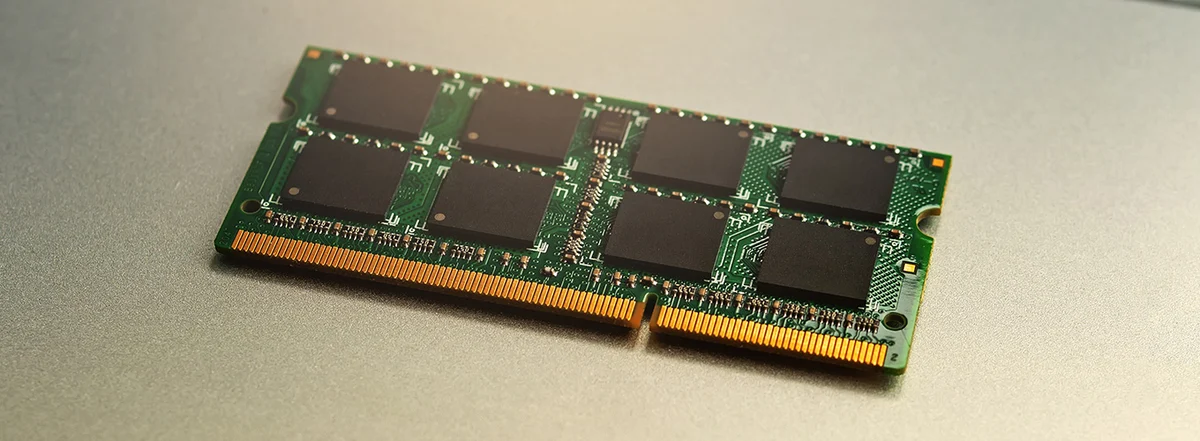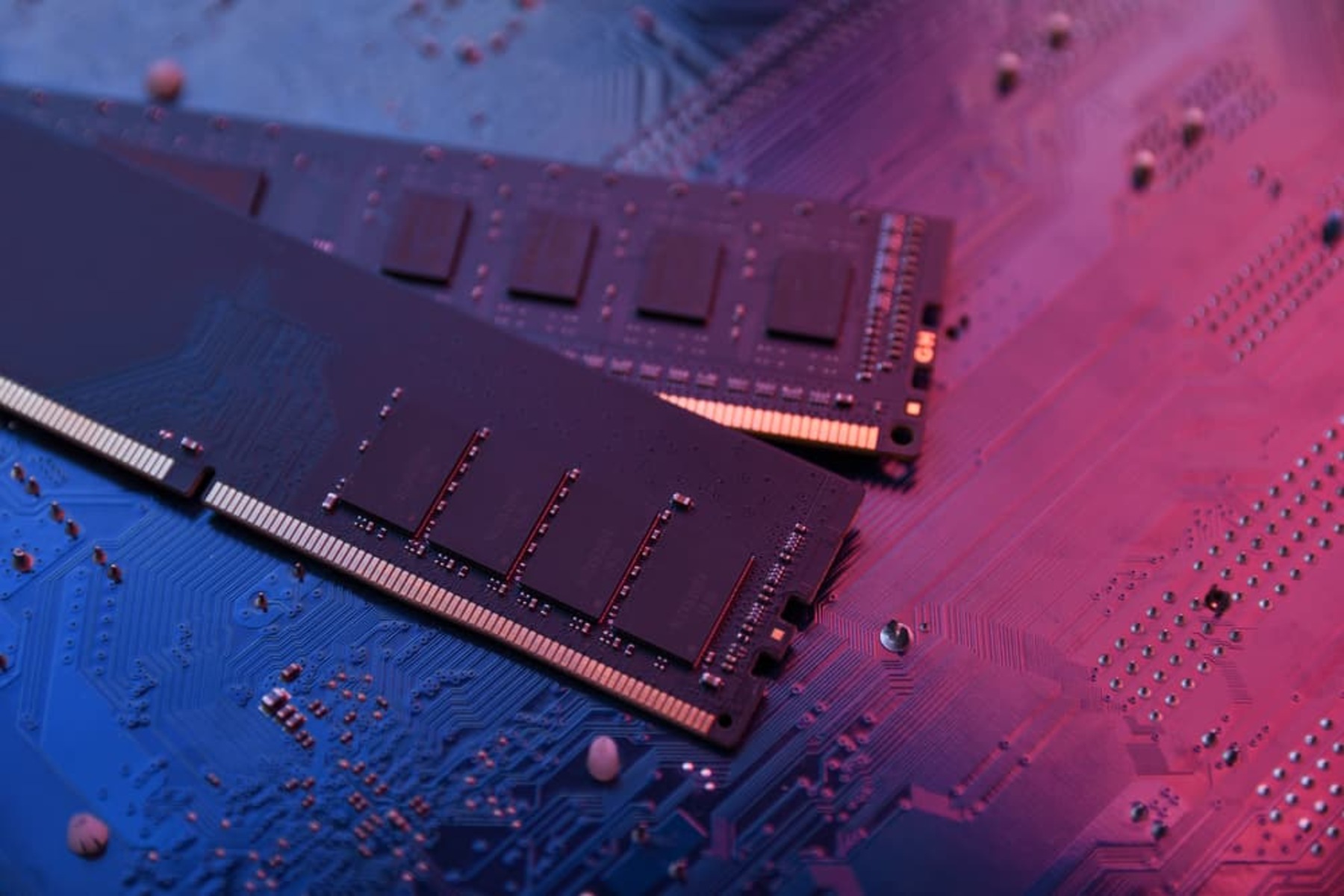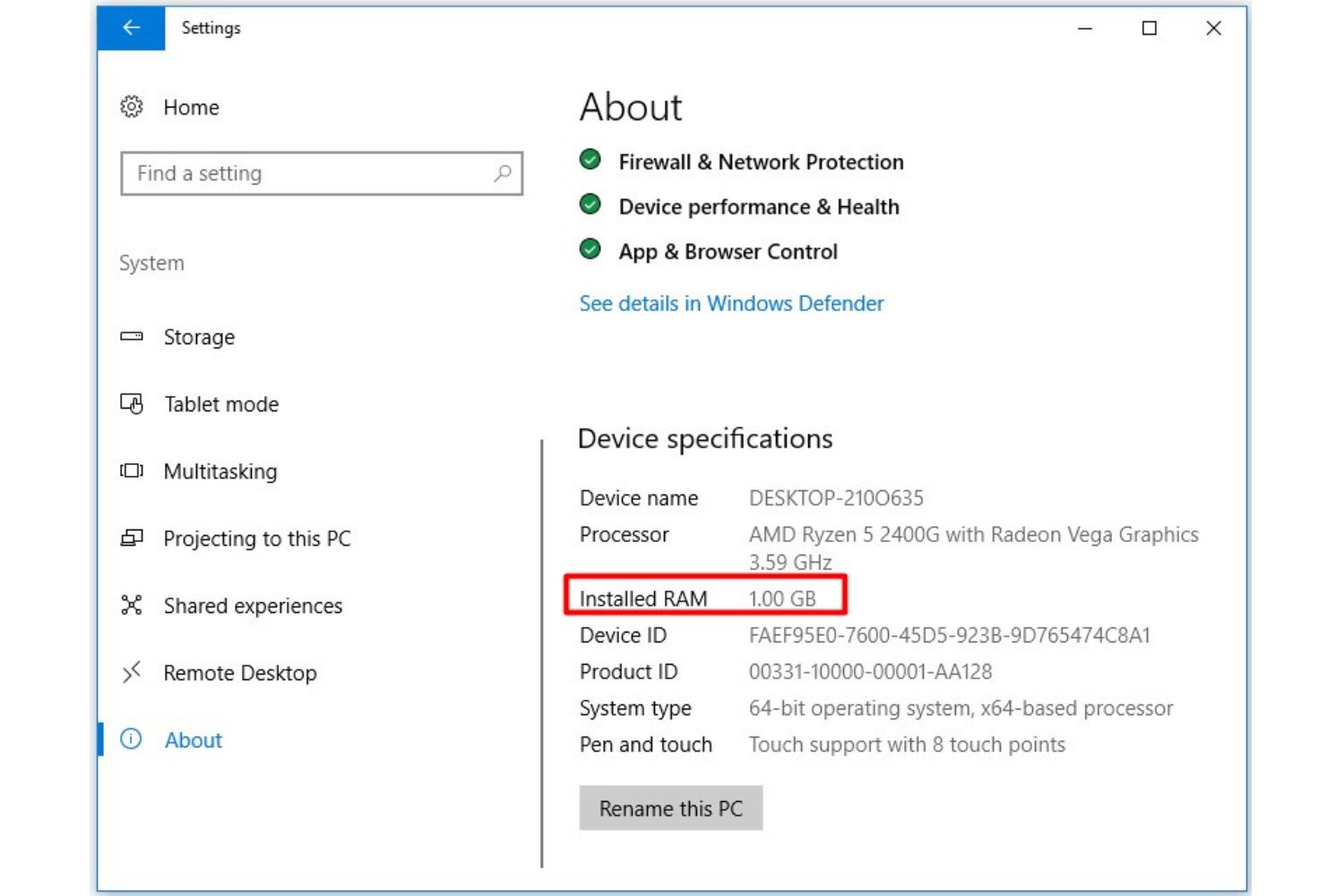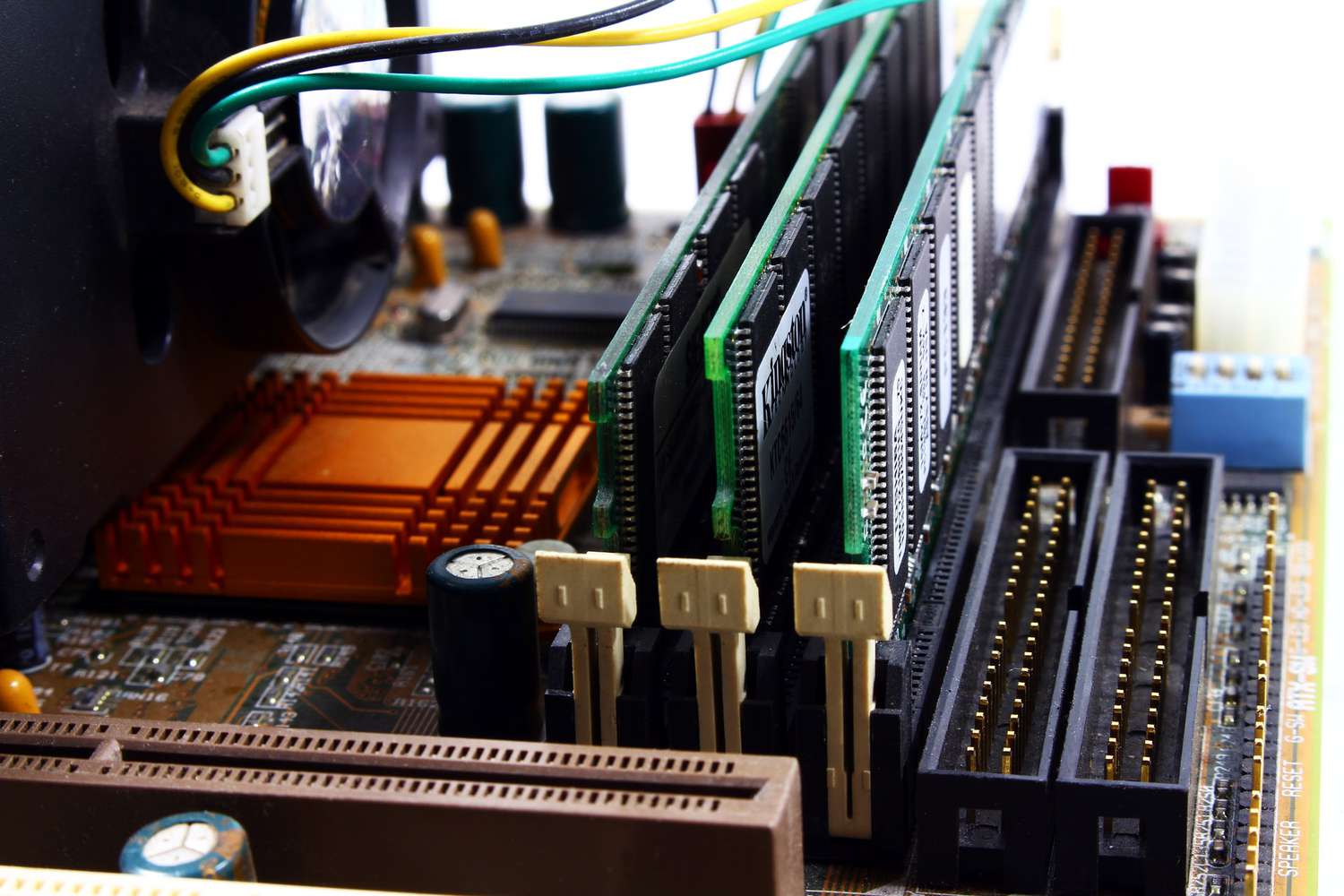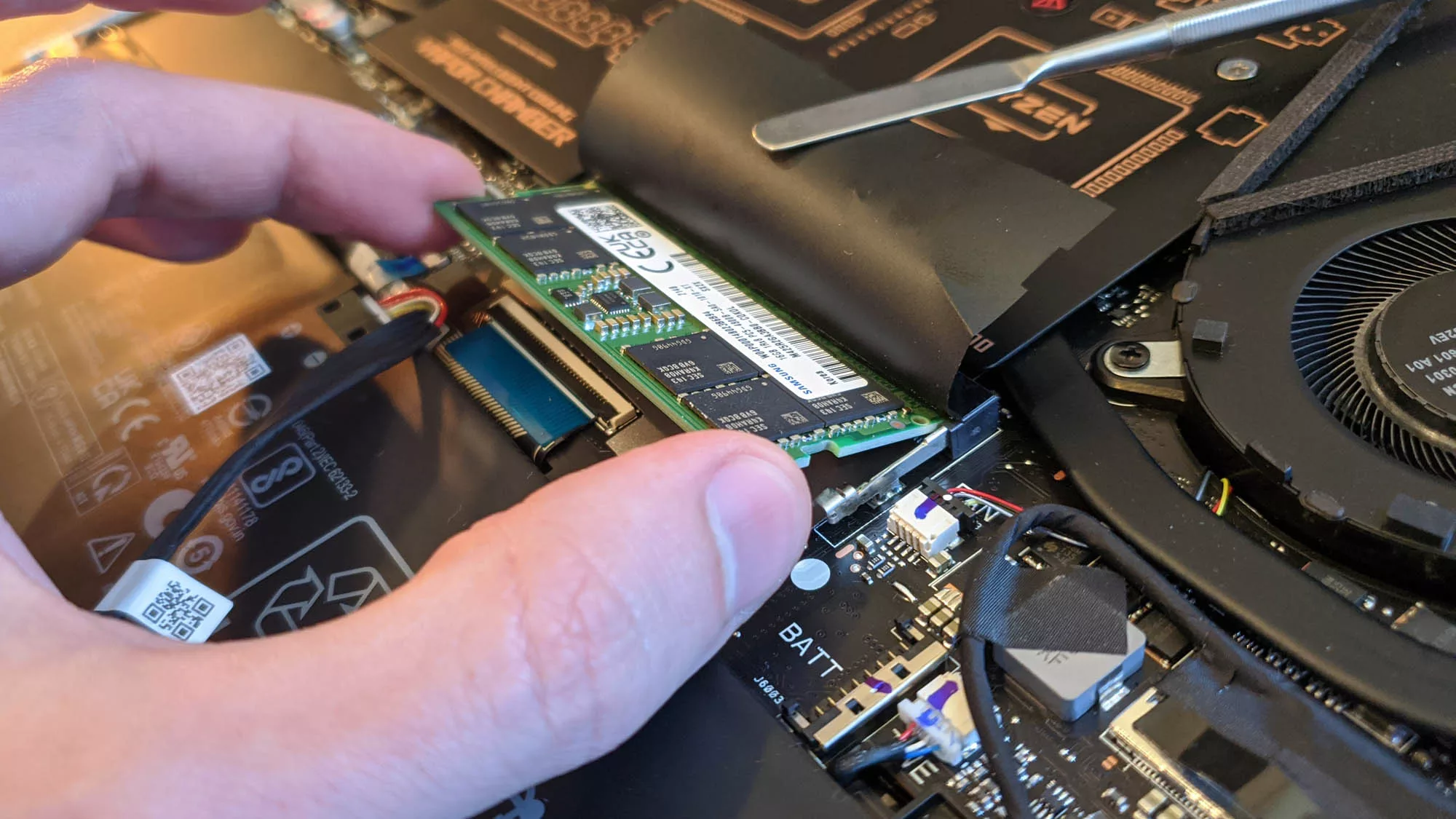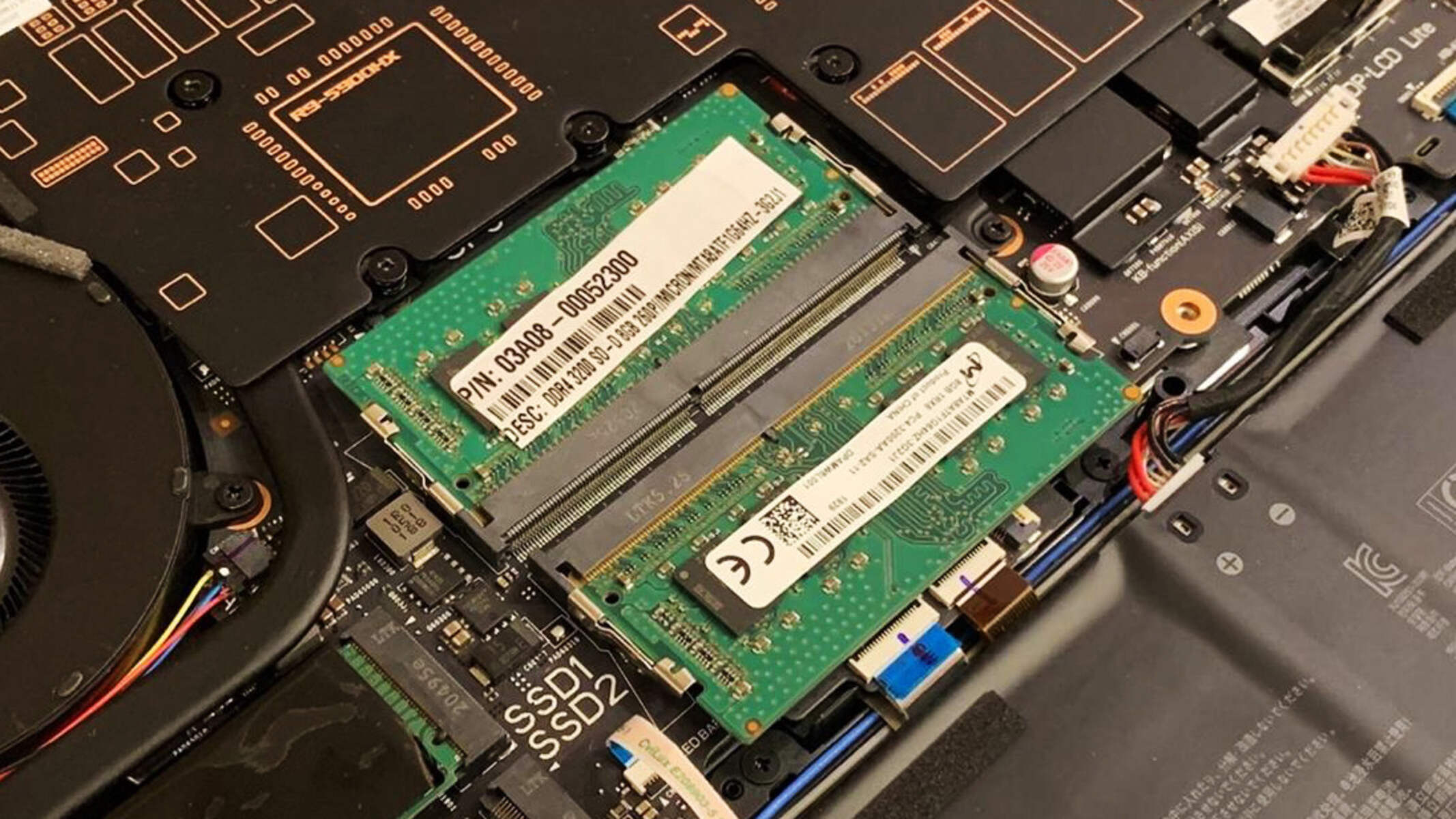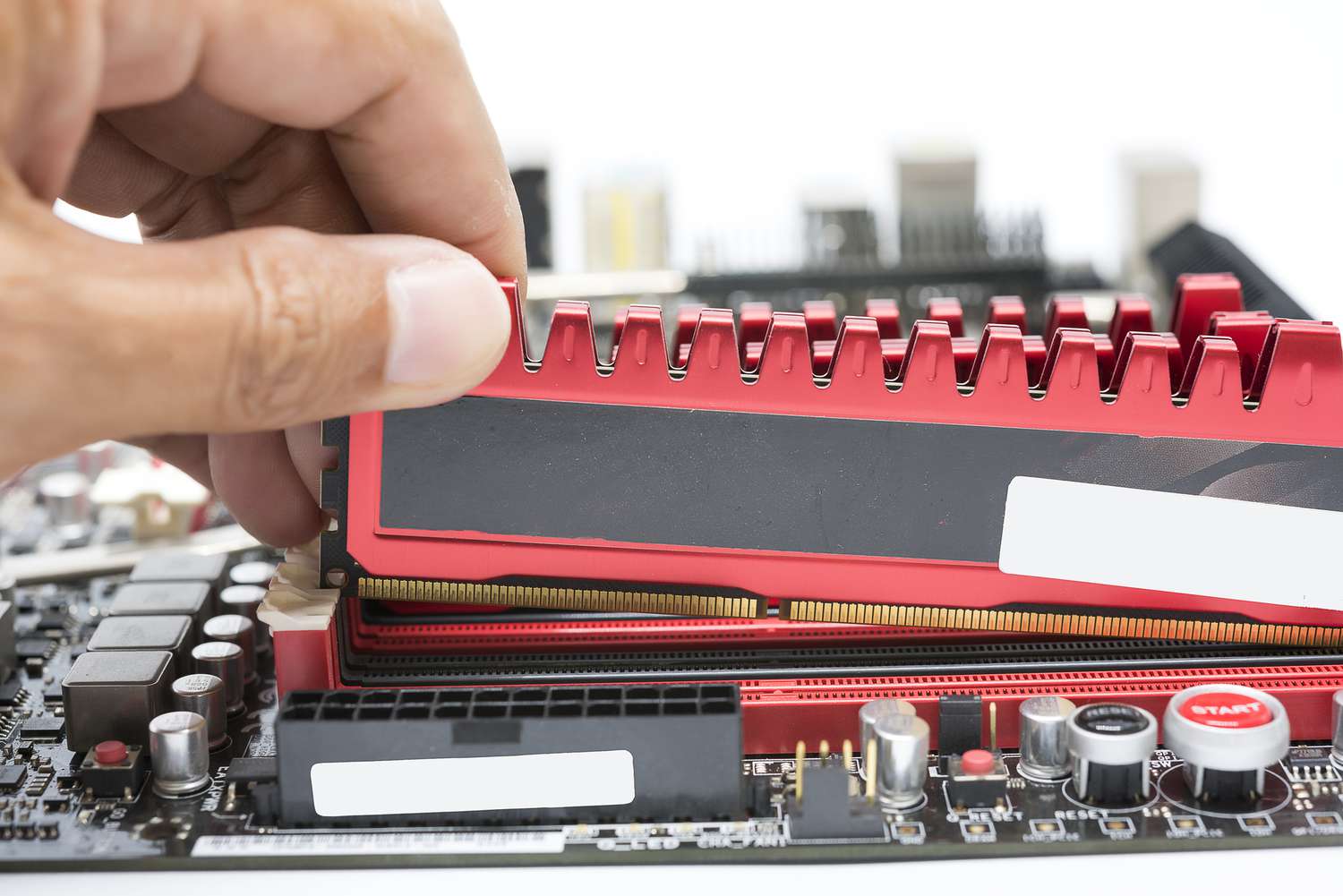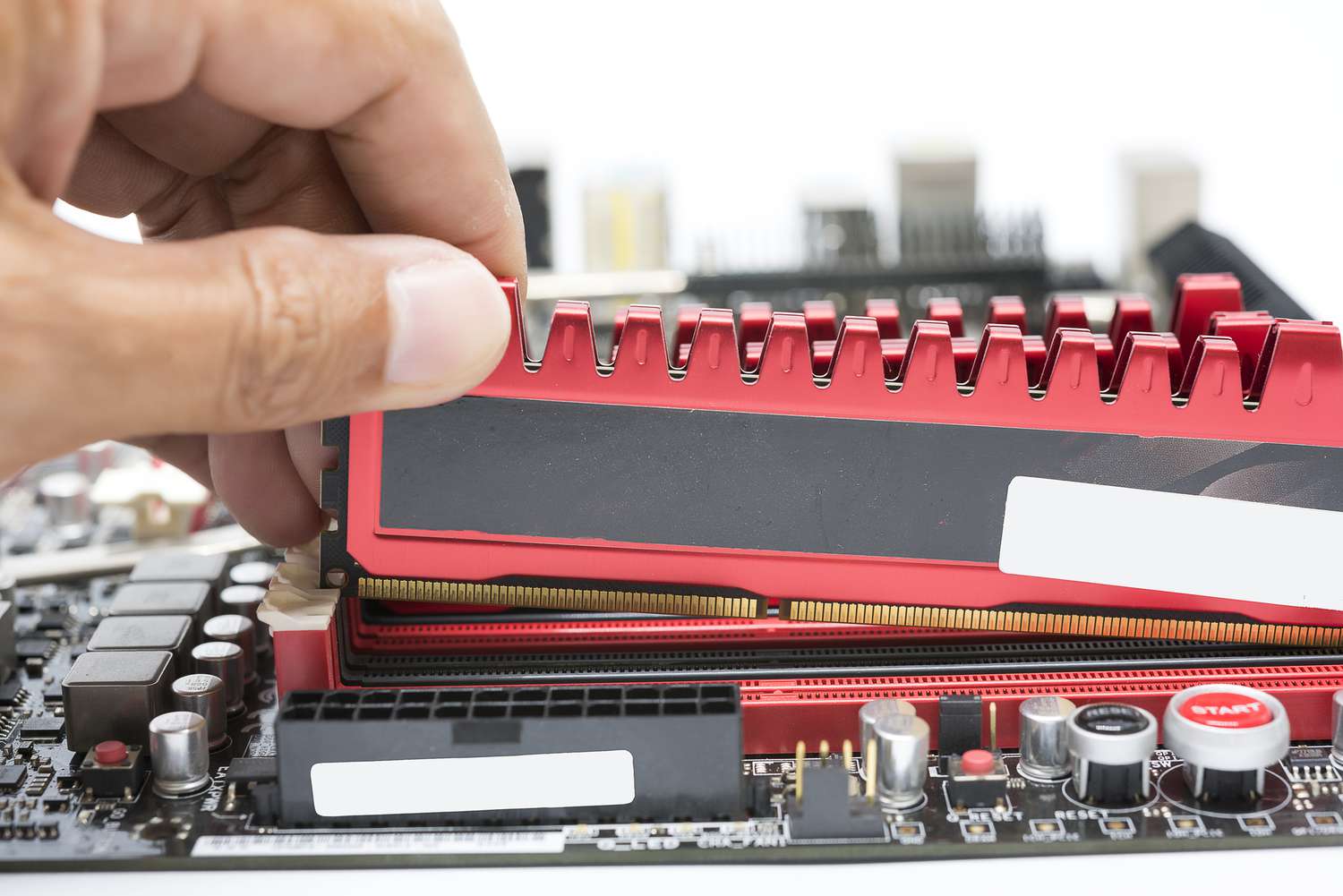Introduction
When it comes to optimizing the performance of your computer, understanding its specifications is essential. One crucial aspect to consider is the speed of your computer’s RAM (Random Access Memory). RAM speed plays a vital role in determining how quickly your computer can access and process data, which directly impacts its overall performance.
Knowing the maximum RAM speed supported by your computer is important for several reasons. Firstly, it allows you to make informed decisions when upgrading or replacing your RAM modules. By selecting RAM modules that are compatible with your computer’s maximum supported speed, you can maximize its performance potential. Secondly, it helps avoid purchasing RAM modules that exceed your computer’s maximum capability, as they may not work correctly or provide any significant benefits.
In this article, we will guide you through the process of checking the maximum RAM speed supported by your computer. We will provide step-by-step instructions for Windows, Mac, and Linux operating systems, ensuring that you have the necessary information regardless of your preferred platform.
Before we delve into the technical steps, let’s quickly understand the concept of RAM speed. RAM speed refers to the frequency at which data can be read from or written to the RAM module. It is measured in megahertz (MHz) and represents the number of operations the RAM can perform in one second. Higher RAM speeds translate into faster data transfer rates and smoother multitasking capabilities.
Now that we have covered the basics, continue reading to find out how you can determine the maximum RAM speed supported by your computer, enabling you to make informed decisions about upgrading your system’s memory.
Finding Your Computer’s Specifications
Before you can check the maximum RAM speed supported by your computer, you need to gather information about your system’s specifications. Here are a few methods to find your computer’s specifications:
1. Windows: On your Windows computer, you can find the specifications by following these steps:
- Click on the “Start” button and type “System Information” in the search bar. Press Enter to open the System Information window.
- In the System Information window, you will find details about your computer’s operating system, processor, installed memory (RAM), and other hardware components.
2. Mac: If you are using a Mac, you can access your system’s specifications through the “About This Mac” option. Here’s how:
- Click on the Apple menu in the top-left corner of the screen and select “About This Mac.”
- In the window that appears, you will see information about your computer’s model, processor, memory (RAM), and more.
3. Linux: Linux users have a variety of options to check their computer’s specifications, including using the command-line interface or graphical tools specific to their distribution. One common method is to use the “lshw” command, which displays detailed information about the hardware components. Open a terminal window and enter the following command:
sudo lshw
This command will prompt you to enter your password, and once authenticated, it will display a comprehensive list of your computer’s hardware components, including the memory (RAM) details.
Now that you know how to find your computer’s specifications, you are ready to proceed with checking the maximum RAM speed supported by your system. The next section will provide step-by-step instructions for Windows, Mac, and Linux users, ensuring that no matter which operating system you are using, you can determine your computer’s maximum RAM speed accurately.
Understanding RAM Speed
Before we dive into the process of checking the maximum RAM speed supported by your computer, it’s important to have a clear understanding of what RAM speed means and how it affects your computer’s performance.
RAM, or Random Access Memory, plays a crucial role in the overall speed and efficiency of your computer. It is a form of temporary storage where your system stores data that is actively being used. When you open a program or perform a task, the relevant data is loaded into the RAM for quick access by the processor.
RAM speed refers to the rate at which data can be read from or written to the RAM module. It is measured in megahertz (MHz) and determines how quickly your computer can retrieve and process data. A higher RAM speed means faster data transfer rates, leading to improved multitasking capabilities and smoother overall performance.
It’s important to note that RAM speed is different from the amount of RAM you have. While the amount of RAM determines how much data your computer can store, the speed of the RAM determines how quickly that data can be accessed and processed.
When upgrading or replacing your RAM modules, it’s crucial to consider the compatibility of the RAM speed with your computer’s motherboard. Your computer’s motherboard has a maximum supported RAM speed that determines the highest speed at which the RAM modules can operate.
If you install RAM modules with a higher speed than supported by your motherboard, the modules will be automatically downclocked to match the maximum supported speed. On the other hand, if you install RAM modules with a lower speed, your computer will run at the lower speed, potentially negating any performance benefits.
It’s also worth mentioning that mixing RAM modules of different speeds can lead to compatibility issues and may result in instability or system crashes. For the best performance and stability, it is recommended to use RAM modules of the same speed and capacity.
Now that you have a solid understanding of RAM speed and its importance, let’s move on to the step-by-step process of checking the maximum RAM speed supported by your computer.
Checking the Maximum RAM Speed Supported by Your Computer
Now that you understand the significance of RAM speed and its impact on your computer’s performance, it’s time to check the maximum RAM speed supported by your system. Follow the step-by-step instructions below based on your operating system:
Step-by-Step Guide: Windows
- Open the Windows Start menu and type “System Information” in the search bar.
- Click on the “System Information” app from the search results to open the System Information window.
- In the System Information window, navigate to the “System Summary” section, where you’ll find detailed information about your computer’s hardware.
- Look for the “BaseBoard Manufacturer” and “BaseBoard Model” fields, which indicate your computer’s motherboard information.
- With this information, visit the manufacturer’s website and search for your specific motherboard model to find its specifications.
- Look for the maximum supported RAM speed in the motherboard’s specifications. It’s usually mentioned as the “Memory Standard” or “RAM Speed.”
Step-by-Step Guide: Mac
- Click on the Apple menu in the top-left corner of the screen and select “About This Mac.”
- In the window that appears, click on the “Overview” tab.
- Make a note of the “Model Identifier” or “Model Name,” which identifies your Mac model.
- Visit the Apple Support website and search for your Mac’s model using the identifier or name.
- Once you find your Mac’s specifications, look for the maximum supported RAM speed in the technical details.
Step-by-Step Guide: Linux
- Open a terminal window by pressing
Ctrl + Alt + Ton the keyboard. - Enter the following command to display detailed information about your computer’s hardware:
- Look for the “Speed” field in the output, which indicates the current speed of your installed RAM modules.
- To find the maximum supported RAM speed, you can refer to your computer’s motherboard specifications. The process may vary depending on your specific Linux distribution.
sudo dmidecode --type memory
By following these step-by-step instructions, you can easily determine the maximum RAM speed supported by your computer. Once you have this information, you can make informed decisions when upgrading or replacing your RAM modules to optimize your computer’s performance.
Step-by-Step Guide: Windows
If you’re using a Windows operating system, follow these steps to check the maximum RAM speed supported by your computer:
- Open the Windows Start menu by clicking on the Start button located at the bottom-left corner of your screen.
- Type “System Information” in the search bar.
- From the search results, click on the “System Information” app to open the System Information window.
- In the System Information window, you’ll find various categories on the left-hand side. Click on “System Summary.”
- You’ll see detailed information about your computer’s hardware, including the processor, BIOS version, and installed memory (RAM).
- Look for the fields labeled “BaseBoard Manufacturer” and “BaseBoard Model.” These fields indicate the manufacturer and model of your computer’s motherboard.
- Once you have the motherboard information, open your web browser and visit the manufacturer’s website.
- Search for your specific motherboard model on the manufacturer’s website.
- Find the specifications section for your motherboard model. It is usually listed under the “Support” or “Product” page.
- In the specifications, look for the maximum supported RAM speed. It may be mentioned as “Memory Standard” or “RAM Speed.”
By following these steps, you can easily find the maximum RAM speed supported by your Windows computer. Remember to choose RAM modules that are compatible with your motherboard’s maximum supported speed to ensure optimal performance.
Step-by-Step Guide: Mac
If you’re using a Mac computer, you can follow the steps below to check the maximum RAM speed supported:
- Click on the Apple menu located in the top-left corner of the screen.
- From the drop-down menu, select “About This Mac.”
- A window will appear, displaying an overview of your Mac’s information.
- Make note of the “Model Identifier” or “Model Name.” This will help you identify your particular Mac model.
- Open your web browser and visit the Apple Support website.
- On the Apple Support website, use the search feature and enter the model identifier or model name of your Mac.
- Locate the technical specifications page for your Mac model.
- In the technical specifications, search for the section related to memory (RAM) or system specifications.
- You’ll find information about the maximum supported RAM capacity and sometimes the RAM speed.
- Make note of the maximum supported RAM speed mentioned in the specifications.
By following these steps, you can easily determine the maximum RAM speed supported by your Mac. This information will be useful when upgrading or replacing your RAM modules to ensure optimal performance.
Step-by-Step Guide: Linux
If you’re using a Linux operating system, you can follow the steps below to check the maximum RAM speed supported by your computer:
- Open a terminal window by pressing
Ctrl + Alt + Ton your keyboard. This will launch the terminal application. - In the terminal, enter the following command:
sudo dmidecode --type memoryThis command will prompt you to enter your password. Enter your password and press Enter.
- The command will display detailed information about your computer’s hardware configuration, including the installed RAM modules.
- Look for the “Speed” field in the output. This indicates the current speed of your installed RAM modules.
- To find the maximum supported RAM speed, you’ll need to reference your computer’s motherboard specifications. The process may vary depending on your specific Linux distribution.
- Visit the website of your motherboard manufacturer or consult the documentation that came with your computer.
- Look for the specifications section related to your motherboard model.
- Within the specifications, search for the maximum supported RAM speed. It may be listed as “Memory Standard” or “RAM Speed.”
By following these steps, you’ll be able to determine the maximum RAM speed supported by your Linux computer. This knowledge will help you make informed decisions when upgrading or replacing your RAM modules, ensuring optimal performance for your system.
Troubleshooting Tips
While checking the maximum RAM speed supported by your computer is a straightforward process, there may be some challenges or issues that you encounter along the way. Here are a few troubleshooting tips to help you overcome common obstacles:
1. Inaccurate or Missing Information: If you find that the information about your computer’s specifications or motherboard is inaccurate or missing, you can try alternative methods of finding the information. For example, consult the documentation that came with your computer, check the BIOS settings, or use system monitoring software to gather accurate details.
2. User Restrictions: Depending on your user permissions on your computer, you may encounter restrictions when accessing certain system information. In such cases, log in as an administrator or seek assistance from someone with administrative privileges to gain access to the necessary information.
3. Compatibility Issues: It’s important to ensure compatibility between your computer’s motherboard and the RAM modules you plan to install. Check the motherboard’s specifications carefully to ensure it supports the desired RAM speed. Additionally, ensure that the RAM modules are correctly seated and properly installed in the appropriate slots.
4. BIOS Updates: Occasionally, a motherboard may require a BIOS update to support higher RAM speeds. Before upgrading your RAM modules, check the manufacturer’s website for any available BIOS updates that may be necessary to unlock higher speed support.
5. Consulting Technical Support: If you encounter technical difficulties or have specific questions about your computer’s maximum supported RAM speed, it can be helpful to reach out to technical support from your computer manufacturer or motherboard manufacturer. They can provide guidance and assistance tailored to your specific system.
Remember, it’s important to exercise caution when modifying hardware components in your computer. If you’re not familiar with the process or feel unsure, consider seeking professional assistance or consulting with an expert.
By following these troubleshooting tips, you can overcome common challenges and ensure that you have accurate information about your computer’s maximum RAM speed capabilities. This will enable you to make informed decisions about upgrading your system’s memory to enhance its performance.
Conclusion
Understanding the maximum RAM speed supported by your computer is crucial for optimizing its performance. With the step-by-step guides provided for Windows, Mac, and Linux operating systems, you can easily determine the maximum RAM speed your system can handle.
By checking your computer’s specifications and referencing the motherboard documentation or manufacturer’s website, you can find the maximum RAM speed supported. This information will guide you in choosing compatible RAM modules to enhance your computer’s multitasking capabilities and overall speed.
Remember, RAM speed is different from the amount of RAM in your computer. While having sufficient RAM is important, the speed at which data can be accessed and processed significantly impacts your computer’s performance.
Throughout the process, it’s essential to troubleshoot any inaccuracies, user restrictions, or compatibility issues that may arise. If needed, consult technical support for expert guidance and advice.
Now armed with the knowledge of your computer’s maximum RAM speed, you can make informed decisions when upgrading or replacing your RAM modules. By choosing modules that utilize the maximum supported speed, you will optimize your computer’s performance and ensure smooth multitasking capabilities.
Take the time to explore the potential RAM upgrades available for your computer—it can truly make a difference in how efficiently your system operates and handles demanding tasks.
We hope this guide has been helpful in determining the maximum RAM speed supported by your computer. Enjoy the improved performance and productivity that comes with optimal RAM speed!







